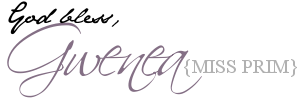When I was first introduced to the blogosphere, I was prevented from ordering designs by the fact that I had no idea what the heck any of the items were. So, in case other people are having similar issues, I'm writing a post explaining everything!
Let's start at the top.
Blog Backround
The blog backround is the design you see on the sides (and sometimes the top and bottom) of the blog.
Header
The header is the image that has the title and description of the blog.
(please excuse my lousy circling skills)
Blog Button
A small image, used to advertise a blog. It usually is linked to the blog, so that a simple click will take a person to the blog.
Blog Button Code
Placed below the button itself. Used to link the button directly to the blog itself, and to make adding it to one's sidebar simpler.
Navigation Fleet
A navigation fleet is used to 'navigate' from one post to the next, using three buttons; Older posts, Newer posts, and Home. Clicking on them takes you to a newer post, and older post, or the home page.
Signature
A signature is an image with the blog user's name, and often a bit of decoration. It is merely a signature, a fancy way of signing a post.
Expand/Collapse Menu
A menu, consisting of small, rectangular buttons. When clicked, the menu expands and collapses. Useful for things like biographies, buttons, scrolling buttons, and emails.
Page Links
Page links are simply that; links to different blog pages. Custom page links are images that link to your blog page.
FavIcon
A small icon/image used as a sort of logo of the blog on one's internet browser.
Post Divider
This is a decorative image that goes between each individual post. It is sometimes used as a signature. Ours was horrid, so I got rid of it, so I hope Miss Liz B doesn't mind me using hers as a reference. (I chose her blog because I designed her divider.)
Post Title Icon
A post title icon is an image that is put next to/ under/over the post's title.
Ours is kinda ugly right now. I'm working on a new one.
Well, that wraps up today's tutorial! Any questions about the existing explanations? Want another one? Don't hesitate to ask! Drop a comment below, or email us!






















